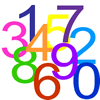Skip over navigation

13 Steps
Measuring with Rods
Cinema Sweets
Heavy Pockets



Or search by topic
Number and algebra
Geometry and measure
Probability and statistics
Working mathematically
Advanced mathematics
For younger learners
Freedom and Constraints

Freedom and Constraints
Mathematicians often explore structures, notice patterns, find rules and make generalisations. Once they feel they understand a structure, they then push at the boundaries, change the problem, and explore the new structures that emerge.
In this feature, we have chosen some resources from the Freedom and Constraints pathway on wild.maths.org.
Here's how you can send your solutions to these problems.
In this feature, we have chosen some resources from the Freedom and Constraints pathway on wild.maths.org.
Here's how you can send your solutions to these problems.
13 Steps Age 11 to 16
Age 11 to 16
Measuring with Rods Age 11 to 16
Age 11 to 16
Cinema Sweets Age 11 to 16
Age 11 to 16
Heavy Pockets Age 11 to 16
Age 11 to 16
You may also like
Patterns in Number Sequences
These resources are designed to get you thinking about number sequences and patterns.
Reasoning Geometrically
These resources are designed to get you thinking about geometrical reasoning.
Reasoning with Numbers
These resources are designed to get you thinking about reasoning with numbers.

